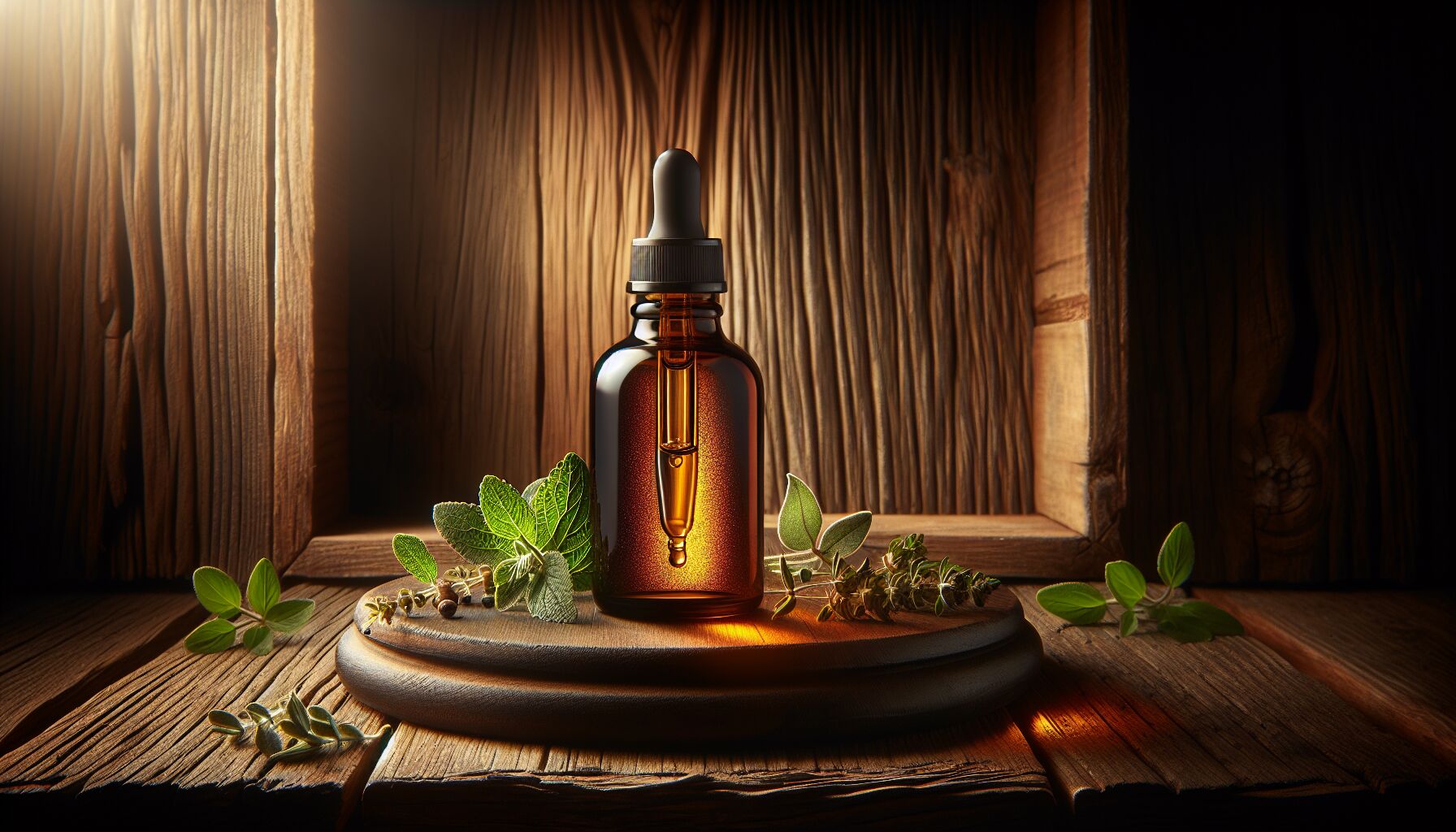Picking the right herbs for your tincture isn’t just about grabbing whatever looks nice at the farmers’ market—there’s a bit of strategy involved. Herbal medicine has been around for centuries, and different cultures have mastered the art of selecting the most potent plants for healing. Some herbs work well for general wellness, while others are powerhouses for specific issues like digestion, sleep, or immunity. So, where do you start?
Know Your Herb’s Personality
Every herb has a personality—some are gentle and nurturing, like chamomile, while others, like echinacea, pack more of a punch. If you’re new to DIY health preparations, start with herbs that are widely known for their safety and effectiveness. Think mint for digestion, elderberry for immunity, or lemon balm for stress relief.
Then there are the stronger ones—those that require a little more respect. Take goldenseal, for instance. It’s an absolute powerhouse for immune support, but overusing it can cause imbalances. And let’s not forget valerian, which has been called “nature’s tranquilizer” for a reason—it’s fantastic for sleep but has a distinctive smell that’s, well… an acquired taste.
Fresh vs. Dried: Does It Matter?
Absolutely. Fresh herbs contain more water, which means their potency can be slightly diluted unless handled properly. If you’re using fresh material, you’ll need more of it, and a higher-proof alcohol (think 190-proof grain alcohol) helps extract all the good stuff without spoiling. Dried herbs, on the other hand, are already concentrated and work beautifully for tinctures, offering consistent potency and a longer shelf life.
One trick? If a plant feels delicate—like basil or cilantro—it’s often better fresh. But if it’s hardy, like echinacea root or cinnamon bark, drying actually intensifies the medicinal compounds.
Sourcing Matters—A Lot
Ever had an herbal tea that tasted weak and barely had an effect? That’s often because the herbs were old, poorly sourced, or grown in nutrient-deficient soil. Whether you wild-harvest, order online, or buy from a local herb shop, always look for vibrant color and strong aroma. If you’re foraging, be 100% sure of plant identification. Mistaking a toxic plant for a safe one is, obviously, not the kind of surprise we’re aiming for.
And if you’re buying commercially? Organic or ethically wildcrafted is the way to go. No one wants pesticide-laden herbs in their natural remedies.
Pairing Herbs Like a Pro
Some herbs work best when paired with others to enhance their effect. Consider how traditional herbalists blend herbs for synergy—licorice root, for example, helps other herbs work better by improving absorption. Similarly, combining anti-inflammatory herbs like turmeric with black pepper maximizes bioavailability.
A good general rule? Pair:
– Soothing herbs (chamomile, lemon balm) with digestive aides (ginger, fennel)
– Immune boosters (elderberry, echinacea) with circulatory enhancers (cayenne, rosemary)
– Calming herbs (valerian, passionflower) with nervine tonics (skullcap, oat straw)
Experiment, But With Respect
Experimenting with your own blends is part of the fun, but herbal medicine isn’t just kitchen alchemy—it’s powerful stuff. Always research herbs before using them, especially if you’re dealing with pre-existing conditions, taking medications, or making tinctures for kids.
Now that you’ve got a solid foundation in choosing your herbs, let’s get into the actual process of making your tincture. Grab your jars and alcohol—it’s time to start mixing.
Step-by-step guide to making herbal tinctures
Step-by-Step Guide to Making Herbal Tinctures
So, you’ve got your herbs picked out and your kitchen counter ready—time to turn those botanical wonders into potent, shelf-stable tinctures. The process might sound like something out of an apothecary’s handbook, but honestly? It’s just a blend of patience, the right proportions, and a bit of shaking now and then. No fancy lab coats required.
Gather Your Supplies
Before you start, make sure you’ve got everything you need. Here’s your basic toolkit:
– Herbs (dried or fresh, depending on what you’re working with)
– High-proof alcohol (vodka, brandy, or grain alcohol work best)
– Clean glass jar with a tight-fitting lid (amber or clear, though clear should be stored in a dark place)
– Sharp knife or scissors (for chopping fresh herbs)
– Cheesecloth or fine strainer (for filtering)
– Dark glass dropper bottles (for storing when it’s done)
– Labels (trust me, after a few weeks, all those mystery jars look the same)
Choosing Your Solvent—Alcohol, Vinegar, or Glycerin?
Herbal tinctures are traditionally made with alcohol because it extracts a broad range of medicinal compounds and preserves the mixture for years. If you’re making a tincture for children or someone avoiding alcohol, glycerin or vinegar can work, but there’s a tradeoff—glycerin-based tinctures tend to be sweeter but not as potent, and vinegar-based ones can extract certain compounds well but have a shorter shelf life.
For alcohol-based tinctures, go for at least 80-proof (40% alcohol), though some herbs—especially roots and resins—need a stronger solvent like 190-proof grain alcohol. If you’re using fresh herbs, a higher-proof alcohol helps counter the extra water content and keeps mold at bay.
The Ratio Matters
Getting the right balance of herb to liquid is key. While you’re not bound to laboratory-level precision, you want to aim for:
| Herb Type | Alcohol Strength | Ratio (Herb to Alcohol) |
|---|---|---|
| Fresh Herbs | 80-100 proof | 1 part herb to 2 parts alcohol |
| Dried Herbs | 80-100 proof | 1 part herb to 5 parts alcohol |
| Roots, Barks, & Resins | 100-190 proof | 1 part herb to 3 parts alcohol |
If you’re not into measuring obsessively, just make sure the herbs are well-submerged, and you’re in the right neighborhood. Adding too little alcohol can encourage mold, while drowning your herbs in too much liquid can dilute the final product.
Assembling the Tincture
1. Chop or crush your herbs – If they’re fresh, chop them finely. If dried, give them a good crumble. More surface area means better extraction.
2. Fill your jar – Loosely pack your herbs in a clean jar. You don’t want to cram them down too tightly, just enough to fill it up comfortably.
3. Pour in your alcohol – Slowly pour until the herbs are fully covered by at least an inch of liquid. If they float, press them down gently with a spoon.
4. Seal, shake, and label – Tighten the lid, give the jar a good shake, and slap on a label with the herb name and date. Future you will thank you.
5. Store in a cool, dark place – A pantry or cupboard works great—just make sure it’s not near direct sunlight or heat.
The Waiting Game
Herbal tinctures need time to develop their medicinal potency. Plan on about 4-6 weeks for a full extraction, though some eager crafters strain theirs in as little as two weeks. But patience has its perks—the longer soak time allows a deeper extraction of beneficial compounds.
Shake the jar every few days (or each time you remember). This helps encourage better infusion and ensures your DIY health project stays active.
Storing and using your homemade medicines

Storing and Using Your Homemade Medicines
Now that you’ve patiently waited for your tincture to reach its full potency, it’s time to strain, store, and—most importantly—use it. Proper storage ensures your herbal medicine stays effective for years, and knowing the right way to administer it means you’ll get the most benefit from your DIY health creations. Let’s break it down.
Straining and Bottling Like a Pro
When your tincture is ready, straining is the final step before bottling. A fine-mesh strainer or cheesecloth works best to separate the liquid from the spent herbs. Some people even double strain to remove every last piece of plant material—if you want your tincture to look extra polished, go for it.
– First, set up your strainer over a bowl or glass measuring cup—something with a spout makes pouring easier.
– Slowly pour the tincture through, letting gravity do the work. If using cheesecloth, give it a gentle squeeze to extract every last drop.
– Funnel the liquid into dark glass dropper bottles. Those little amber or cobalt blue bottles aren’t just aesthetic—they help shield your tincture from UV light, which can degrade potency over time.
– Label everything! Seriously. A year from now, you don’t want to be sniffing multiple mystery bottles trying to remember which one is lemon balm and which one is valerian root. Write the herb, alcohol type, and date.
Storage Secrets for Maximum Shelf Life
Alcohol-based tinctures are herbal medicine’s version of fine wine—they only get better with age if stored properly. And the good news? They last years. Some well-preserved tinctures remain potent for up to a decade.
Here’s how to keep yours in prime condition:
– Store in a cool, dark place, like a pantry or medicine cabinet away from heat and direct sunlight.
– Keep tinctures in glass, not plastic. Plastic can leach chemicals over time (and nobody wants that in their natural remedies).
– Always ensure the lid is tightly sealed—airtight storage keeps contamination and evaporation at bay.
Vinegar-based tinctures don’t last as long—expect about six months to a year. Glycerin-based tinctures, while sweeter, typically hold potency for two to three years if stored well.
How Much Should You Take?
This is where people often get nervous. Unlike store-bought medicine with pre-printed dosages, homemade tinctures require a bit more intuition—but don’t worry, there are guidelines to follow.
The general range for most herbal tinctures is:
– For general wellness: 1-3 droppers full (about 1/4 to 1/2 teaspoon) 1-3 times per day
– For acute conditions (like colds or stress relief in the moment): A dose every few hours as needed
– For long-term tonic use (like adaptogens or immune support): 1-2 droppers per day over weeks or months
Since homemade tinctures can vary in potency depending on the herb-to-alcohol ratio, start small and adjust as needed. For milder herbs like chamomile or lemon balm, you may take more. Stronger tinctures—think valerian or goldenseal—should be used with more caution.
Different Ways to Take Your Tincture
If the thought of taking straight-up tincture makes you wince, you’re not alone. Alcohol-based tinctures can be pretty intense, but there are creative (and painless) ways to work them into your routine.
– Under the tongue (sublingual method): This is the fastest way to absorb herbal medicine. A few drops under the tongue bypass digestion and go straight into the bloodstream. If the alcohol burns, dilute it with a little water.
– Diluted in water, tea, or juice: If you’re not a fan of strong herbal flavors, just mix it with something mild. A few drops of echinacea tincture in orange juice? Much easier to swallow.
– Added to food: Some tinctures blend well into honey, smoothies, or even salad dressings. A little creativity goes a long way.
 DS Haven In Light Of Things
DS Haven In Light Of Things


